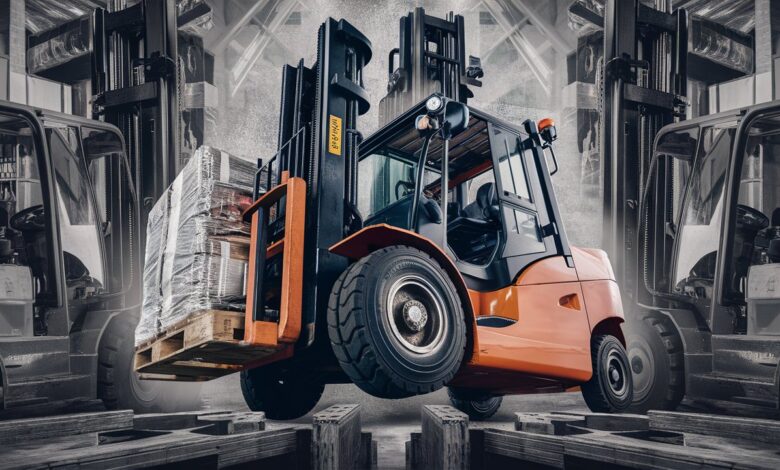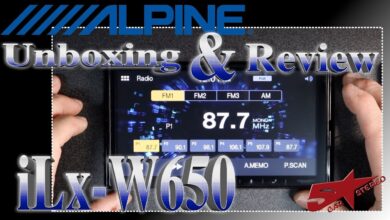Maximizing Equipment Efficiency Through Quality Forklift Parts

Forklifts are indispensable assets in warehouses, manufacturing plants, and logistics operations. These machines are the backbone of material handling, enabling the smooth and efficient movement of heavy goods. To maintain their reliability and performance, the components that make up these machines—commonly known as forklift parts—must be carefully selected, maintained, and replaced when necessary.
This article explores the crucial role forklift parts play in operational efficiency, safety, and cost management. We will delve into the types of parts, maintenance best practices, and how choosing the right components contributes to the longevity and effectiveness of forklifts.
The Integral Role of Forklift Parts in Operational Success
Every forklift is a complex assembly of numerous parts working in unison to perform heavy-duty lifting and transport tasks. These parts must withstand constant stress, harsh environments, and demanding usage schedules. The integrity of each component directly impacts the forklift’s overall functionality.
Poorly maintained or substandard forklift parts can lead to equipment failure, safety hazards, and increased downtime. Conversely, high-quality parts ensure that forklifts operate efficiently, reducing interruptions and protecting both operators and goods.
Key Categories of Forklift Parts
Understanding the different types of forklift parts helps in managing maintenance and repairs effectively. Below are some essential forklift parts grouped by their function:
1. Powertrain Components
These parts generate and transfer power necessary for movement and lifting. They include:
- Engines (diesel, gasoline, or LPG)
- Transmissions
- Drive axles
- Clutches and torque converters
Proper care of powertrain components ensures smooth operation and fuel efficiency.
2. Hydraulic System Parts
Hydraulics control lifting and tilting mechanisms. Critical parts include:
- Hydraulic pumps and motors
- Cylinders and valves
- Hoses and fittings
- Seals and gasket
Hydraulic system failures often lead to significant downtime, making the condition of these parts vital.
3. Mast and Fork Assemblies
The mast supports vertical lifting, and the forks carry the load. Relevant parts include:
- Fork blades and heels
- Mast channels and rollers
- Chains and pins
- Carriage assemblies
These components must be inspected regularly for cracks or deformation to prevent accidents.
4. Electrical System Parts
Modern forklifts, especially electric models, rely heavily on electrical components such as:
- Batteries and chargers
- Controllers and wiring harnesses
- Switches and sensors
- Motors and solenoids
Reliable electrical parts ensure optimal power management and longer run times.
5. Tires and Wheels
Tires affect maneuverability and stability. Depending on the operating environment, forklifts use:
- Pneumatic tires for outdoor rough terrain
- Solid rubber tires for indoor use
- Polyurethane tires for smooth surfaces
Maintaining tire condition is essential for operator safety and efficient handling.
6. Brake and Steering Components
Safe control depends on:
- Brake pads, drums, and discs
- Steering gears and linkages
- Hydraulic and pneumatic braking systems
Malfunctioning brake or steering parts can lead to dangerous situations.
7. Safety Accessories and Controls
These include:
- Seat belts and restraints
- Warning lights and horns
- Operator presence systems
- Mirrors and cameras
Ensuring these parts function correctly helps maintain compliance with safety regulations.
Why Quality Forklift Parts Matter
Selecting the right forklift parts is more than just matching specifications; it’s about ensuring performance, safety, and cost-effectiveness.
Durability and Reliability
High-quality parts withstand stress and environmental conditions better than cheaper alternatives, minimizing breakdowns and repairs.
Safety
Reliable forklift parts prevent malfunctions that could cause accidents, protecting operators and nearby personnel.
Cost Efficiency
Though quality parts may come at a higher initial cost, they reduce the frequency of replacements and emergency repairs, lowering overall maintenance expenses.
Compatibility
OEM (Original Equipment Manufacturer) or certified parts are designed to fit perfectly and perform optimally, avoiding issues caused by incompatible components.
Maintenance Best Practices for Forklift Parts
Proper maintenance extends the lifespan of forklift parts and enhances overall equipment performance:
- Routine Inspections: Conduct daily and scheduled inspections to identify worn or damaged parts early.
- Timely Replacement: Replace any part showing signs of significant wear or failure promptly.
- Use Appropriate Lubricants: Keep moving parts lubricated to reduce friction and prevent premature wear.
- Cleanliness: Keep parts free of dirt and debris to avoid contamination and corrosion.
- Professional Servicing: Regularly schedule professional forklift service to ensure comprehensive checks and repairs.
Signs That Forklift Parts Need Attention
Operators and maintenance personnel should be alert to indicators suggesting forklift parts require servicing or replacement:
- Unusual noises such as grinding or squeaking
- Reduced lifting capacity or slow responsiveness
- Visible damage such as cracks, dents, or leaks
- Vibrations or instability during operation
- Warning lights or error codes on electronic displays
Addressing these signs promptly prevents costly breakdowns and unsafe conditions.
Sourcing Forklift Parts
Finding reliable suppliers is crucial for obtaining quality forklift parts. Consider the following:
- Authorized Dealers: These provide genuine OEM parts ensuring compatibility and quality.
- Reputable Aftermarket Providers: Some offer high-quality, cost-effective alternatives to OEM parts.
- Online Platforms: Convenient but require careful vetting of sellers to avoid counterfeit or substandard parts.
- Direct Manufacturer Contact: Useful for specific or hard-to-find parts, ensuring authenticity.
The Future of Forklift Parts and Maintenance
Technological advances are transforming forklift parts and maintenance strategies:
- Telematics and IoT: Sensors monitor forklift part conditions in real-time, enabling predictive maintenance and minimizing downtime.
- Advanced Materials: New composites and alloys enhance durability while reducing weight.
- Eco-Friendly Components: Growing emphasis on sustainability is leading to parts that support cleaner, energy-efficient forklifts.
- Mobile Service Solutions: On-site servicing with portable equipment improves maintenance speed and convenience.
Conclusion
The right forklift parts are the cornerstone of maintaining efficient, safe, and cost-effective forklift operations. Investing in quality components, performing regular maintenance, and sourcing parts from trusted suppliers are essential steps to maximize the performance and lifespan of your forklifts.
A proactive approach to forklift parts management not only enhances productivity but also safeguards operators and protects your business from costly downtime. Ultimately, understanding the significance of forklift parts and committing to their proper care will lead to a more reliable and successful operation.




